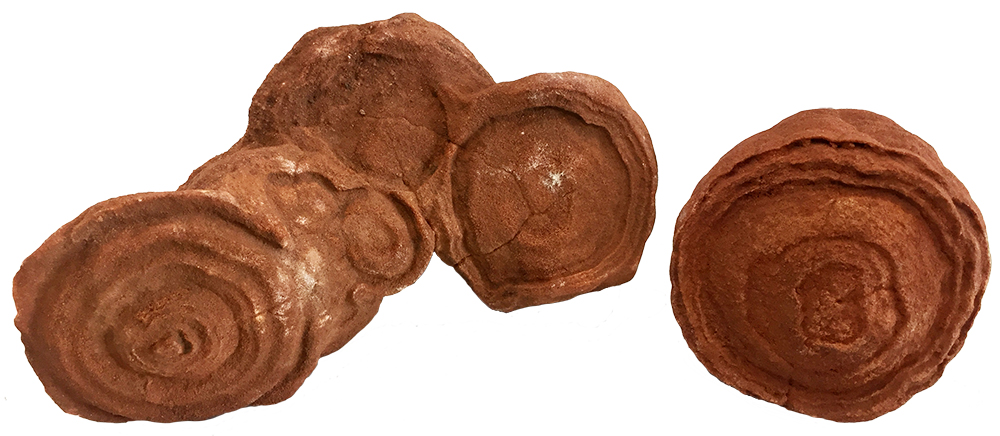
Barite and Sand Concretions
Middle Cretaceous Tegana Formation, Morocco
Although these distinctive sand structures are widely traded and sold as stromatolites, their distinctive shape and concentric layers are surface features. They are not true stromatolites in the sense of having formed as a result of biologic activity, like cyanobacterial mats.
Instead, they form as a result of mineral-rich waters moving through sand, precipitating barite crystals that bind sand grains into concentric patterns. Surface erosion then accentuated differences to create the distinctive shapes and surface banding. Hence, these are a type of concretion rather than a true stromatolite which helps explain the coarseness of the sand they are composed of. Although true stromatolites can bind sediment to form layers, that sediment typically consist of lime mud. Any environment in which coarse sand was the dominant grain size is unlikely to have been a suitable environment for cyanobacteria mats or growth.
Despite not being a fossil, these sand stromatolites are eye-catching and unusual. They are the sort of things early collectors would have prized for cabinets of curiosity, hence their presence here.